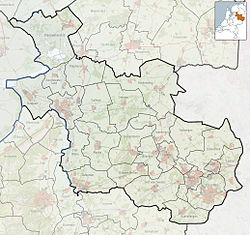|
Tuk, Netherlands
Tuk (Dutch pronunciation: [tʏk]) is a village in the municipality of Steenwijkerland in the province Overijssel, Netherlands. It forms a single urban area with Steenwijk HistoryThe village was first mentioned in the 14th century.[3] The etymology is unclear.[4] Tuk was located on the main road from Friesland to the south, and travellers often stayed in the village, because the city gates of Steenwijk were closed at night. [5] In the 15th century, a chapel was constructed in the village.[6] During the Dutch Revolt, the village was severely damaged in the 1580-1581 and 1592 Siege of Steenwijk, because it was located in between the line of fire.[5] The opening of a dairy factory resulted in further growth. Villa Oostwoud served as town hall for Steenwijkerwold between 1890 and 1972.[6] During the 20th century, the area between Tuk and Steenwijk became an industrial zone,[7] and the village now forms a single urban area with the neighbouring city. It has retained its shops in the village centre.[5] In 1972, it became part of the municipality of Steenwijkerland.[5] NatureDe Woldberg, a 26 metres (85 ft) high remnant of the Last Glacial Period, is located near Tuk, and is covered in beech trees.[8] A tea house is on top of hill, and be reached by 131 steps.[9] References
Wikimedia Commons has media related to Tuk, Netherlands. Information related to Tuk, Netherlands |
||||||||||||||||||||||||||||||||||||


